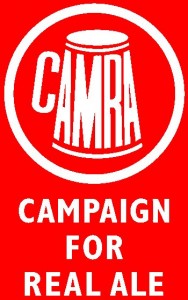 After paying a heating bill that cleaned out my bank account, I was certifiably in need of a beer. However, the heating bill was high because it’s a booger-freezing 6-degrees outside and the thought of wrapping my hands around a chill pint of pale ale gave me the shivers. And then, because my memory is sorted alphabetically by beer, I remembered going to a convention of “real ale” brewers near Boston in early spring one year. NERAX (New England Real Ale eXhibition) promotes the drinking of “real ale,” an attribute of which is its warmer-than-average-US-beer temperature. And I can assure you, I was a warmer-than-average-Boston-spring-evening temperature on my walk home that night.
After paying a heating bill that cleaned out my bank account, I was certifiably in need of a beer. However, the heating bill was high because it’s a booger-freezing 6-degrees outside and the thought of wrapping my hands around a chill pint of pale ale gave me the shivers. And then, because my memory is sorted alphabetically by beer, I remembered going to a convention of “real ale” brewers near Boston in early spring one year. NERAX (New England Real Ale eXhibition) promotes the drinking of “real ale,” an attribute of which is its warmer-than-average-US-beer temperature. And I can assure you, I was a warmer-than-average-Boston-spring-evening temperature on my walk home that night.
NERAX is sort of like the New England version of the perhaps more infamous group, CAMRA. CAMRA, or Campaign for Real Ale, is a British organization (or organisation, if you will) founded in 1971 to “campaign for real ale, pubs, and drinkers’ rights.” They formed as a reaction to the big beer companies mass-producing weak, bland beer. They advocate real ale and community-based pubs and they use language like “traditional,” “social cohesion,” and “under threat,” in their literature, making them sound wee bit like an alcoholic IRA. (Let’s keep that joke inside your head.)
The thread of thought that took me from my heating bill to fervent British beer-lovers was on warm beer. The term “real ale” applies to beer that fills several requirements: it is brewed with only the traditional ingredients (barley, hops, yeast, and water); it ages in a secondary fermenter, from which it is then served; a pint is pulled from the cask using a hand-pull or gravity (no CO2); it’s unfiltered; and they are served at “cellar temperature,” (50-56 degrees) and not in a frosty glass with your favorite football team’s logo on it.
Though it takes a moment for the American mouth to acclimate to the warmer temperature, it is eventually rewarded with a more flavorful drink. Perhaps you’ve heard that red wine needs to “breathe” for a few before you drink it? The same idea applies to beer. Much of the mass-producing breweries who spend more money on marketing than R&D would have you believe that beer is supposed to be served as close to 32-degrees as possible. And that then you will be swept away on a train made of ice filled with beautiful young people. Truth is, good beer at a temp slightly warmer than your fridge will allow it open up and taste better and your friends will still all be average-looking.
CAMRA is appealing to me also because of their proactive role in preserving areas that are “safe, regulated and sociable environments in which people can enjoy a drink responsibly and interact with people from different backgrounds,” otherwise known as “pubs.” Their research shows that “84% of people believe that a pub is as essential to community life as a shop or post office,” which is fantastic, but probably not the same percentage you’d get out of those people in the US who actually complete surveys.
The acknowledgement of the import of pubs impresses me, because beer bars for me have always been important second homes. I think in the US many people associate bars with vice, for better or worse: either it’s more fun because it’s “bad,” or it’s just plain bad because it’s “adult” and not “family-friendly” or any number of other nasty quotation marked phrases. But really, when done right, they can be community centers and important parts of the community’s support structure.
I do wish there were more British-style pubs here and less meat markets whose beer tastes like DJ fog. I wish it were warmer, too, but I can’t join semi-militant acronym to feel self-righteous about that. I could open my own pub, I suppose, and maybe I will. For now, I’ll just pull the stouts out of the fridge early to take the edge off.

Pingback: Challenges & Comforts: Preparing Your Fridge for a Snow Day | PitchKnives and Butter Forks